Choosing the Perfect Sewing Machine: A Guide
Are you ready to dive into the world of sewing? Choosing the right sewing machine can feel like standing at the edge of a vast ocean, with waves of options crashing around you. But fear not! This guide is here to help you navigate through the sea of choices and find the perfect machine tailored to your needs. Whether you’re a seasoned seamstress or a curious beginner, understanding the essential factors when selecting a sewing machine is crucial. This guide explores the different types of machines available, key features that can enhance your sewing experience, and practical tips for making an informed decision.
When it comes to sewing machines, one size definitely does not fit all. Just like how you wouldn’t wear flip-flops to a formal event, the type of sewing machine you choose should align with your sewing goals. There are three primary types of sewing machines: mechanical, electronic, and computerized. Each type has its unique characteristics and advantages.
Mechanical sewing machines are the classic workhorses of the sewing world. They are typically more affordable and straightforward, making them an excellent choice for beginners. With these machines, you’ll find basic stitch options and manual controls, allowing you to get a feel for sewing without the complexities of modern technology.
Electronic sewing machines take things up a notch. They offer a variety of stitch options and often include features like automatic buttonholes and speed control. These machines strike a balance between user-friendliness and advanced capabilities, making them a great option for those looking to expand their sewing skills.
Finally, we have computerized sewing machines. These high-tech wonders come loaded with features like touch screens, built-in embroidery designs, and customizable stitch patterns. While they tend to be pricier, their versatility and ease of use can significantly elevate your sewing projects.
As you embark on your sewing machine journey, it's essential to consider the features that will enhance your experience. Think of these features as the icing on the cake—while the machine itself is the foundation, the right features can make all the difference. Here are some key features to keep an eye on:
- Stitch Options: The variety of stitches available can significantly impact your projects. From basic straight stitches to intricate embroidery designs, having a range of options can open up a world of creativity.
- Speed Control: Being able to adjust the sewing speed is a game changer, especially for beginners. It allows you to take your time and build confidence as you sew.
- Automatic Threading: This feature can save you a lot of frustration and time, making it easier to get started on your projects.
The variety of stitches available on a sewing machine can significantly impact your projects. Imagine trying to paint a masterpiece with only one color; it would be quite limiting, right? Similarly, having a range of stitches allows you to express your creativity fully. Common stitch types include:
- Straight Stitch: The most basic and essential stitch, used for seams and hems.
- Zigzag Stitch: Great for finishing edges and adding stretch to seams.
- Decorative Stitches: These can add flair to your projects, making them stand out.
Utility stitches are fundamental for basic sewing tasks. These stitches are your go-to for everyday projects, such as hemming pants or sewing seams. They form the backbone of your sewing repertoire, ensuring that your projects are sturdy and functional. Think of them as the reliable friends in your sewing journey—always there when you need them!
On the flip side, decorative stitches are where the fun begins! They can transform a simple project into a stunning piece of art. From intricate floral patterns to playful waves, these stitches allow you to add a personal touch to your creations. So, don’t shy away from experimenting with them!
Let’s face it: nobody wants to wrestle with a complicated machine. A sewing machine should be user-friendly and easy to maintain. Look for features like a clear instruction manual, intuitive controls, and easy threading systems. Regular maintenance is also crucial to keep your machine running smoothly. A little cleaning and oiling can go a long way in prolonging the life of your sewing machine.
Budget plays a crucial role in selecting a sewing machine. It’s essential to find a balance between quality and cost. After all, you don’t want to invest in a machine that will disappoint you after just a few uses. Take the time to research and compare different models within your price range. Remember, the most expensive machine isn’t always the best for your needs.
Investing in a sewing machine doesn't have to break the bank. Look for machines that offer great value without compromising quality. Read reviews, ask for recommendations, and consider buying from reputable brands known for their durability. Sometimes, you can find fantastic deals on slightly older models that still pack a punch!
Consideration of a sewing machine as a long-term investment can affect your purchase decision. Think about the projects you want to tackle in the future. Investing in a quality machine now can save you money in the long run, as you won’t need to replace it frequently. Choose wisely, and your sewing machine will be a trusted companion for years to come.
1. What is the best sewing machine for beginners?
A mechanical sewing machine with basic features is often recommended for beginners. It allows you to learn the fundamentals without overwhelming you with technology.
2. How much should I spend on a sewing machine?
It varies depending on your needs, but a budget of $200 to $500 is reasonable for a quality machine that offers essential features.
3. Can I use a sewing machine for quilting?
Yes, many sewing machines are suitable for quilting, but look for one with a larger throat space and quilting-specific features.
4. How often should I service my sewing machine?
Regular maintenance is key. Cleaning and oiling your machine every few months is a good practice to keep it in top shape.
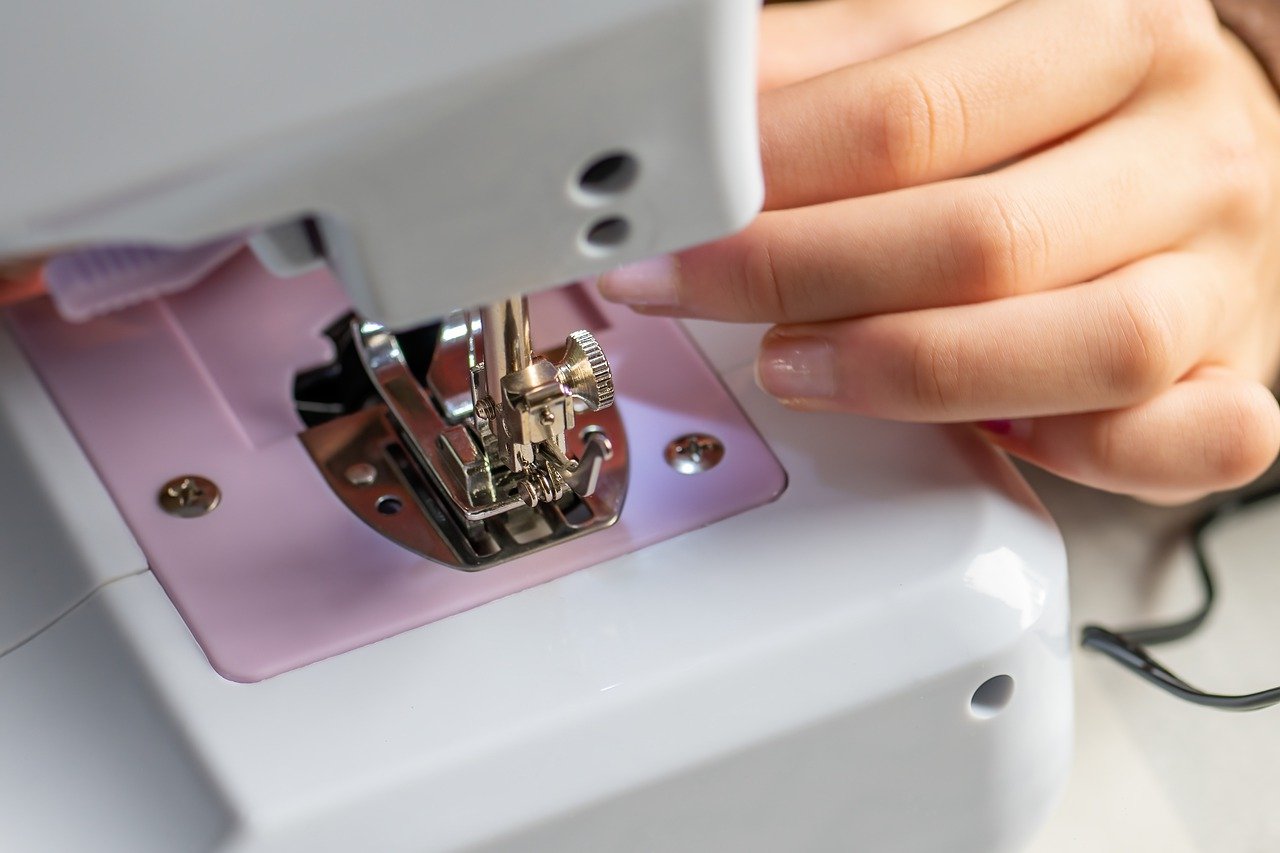
Understanding Different Types of Sewing Machines
When it comes to sewing machines, the variety can be as overwhelming as a fabric store on a Saturday afternoon. Each type of sewing machine is designed with specific functionalities in mind, catering to different sewing needs and skill levels. Understanding the distinctions between mechanical, electronic, and computerized machines is essential for making an informed choice. Let's dive into these categories and discover what makes each one unique.
Mechanical sewing machines are the classic workhorses of the sewing world. They operate using a series of levers and gears, providing a straightforward experience. If you're someone who enjoys simplicity and hands-on control, a mechanical machine might be your best bet. These machines typically feature a limited number of stitches, which are sufficient for basic sewing tasks such as hemming, mending, or making simple garments. Their durability and ease of repair make them a popular choice among beginners and those who appreciate a no-frills approach to sewing.
On the other hand, we have electronic sewing machines. These machines are a step up from the mechanical ones, incorporating electronic components that allow for greater functionality. They often come with a wider range of stitch options and features like automatic buttonhole creation and adjustable stitch length and width. If you're looking to experiment with sewing techniques and want a little more versatility, an electronic sewing machine could be the right fit for you. They are user-friendly, making them a great choice for both beginners and seasoned sewists who appreciate a bit of technology.
Then we arrive at the sophisticated world of computerized sewing machines. These machines are like the smartphones of the sewing realm, packed with advanced features and capabilities. They offer a plethora of stitch options—often hundreds—allowing you to explore your creativity like never before. With features such as touchscreens, built-in tutorials, and the ability to import designs via USB, computerized machines are designed for those who want to take their sewing to the next level. However, they do come with a steeper learning curve and a higher price tag, so it's crucial to weigh your options carefully if you're considering one of these high-tech beauties.
To help clarify the differences, here’s a simple comparison table:
| Type of Sewing Machine | Features | Best For |
|---|---|---|
| Mechanical | Basic stitches, manual controls | Beginners, simple projects |
| Electronic | More stitch options, automatic features | Intermediate sewists, versatile projects |
| Computerized | Hundreds of stitches, advanced features | Advanced sewists, creative projects |
In summary, understanding the different types of sewing machines is crucial to finding the right fit for your sewing journey. Whether you prefer the simplicity of a mechanical machine, the versatility of an electronic model, or the advanced capabilities of a computerized machine, each type has its own set of benefits. So, which one will you choose to accompany you on your sewing adventures?
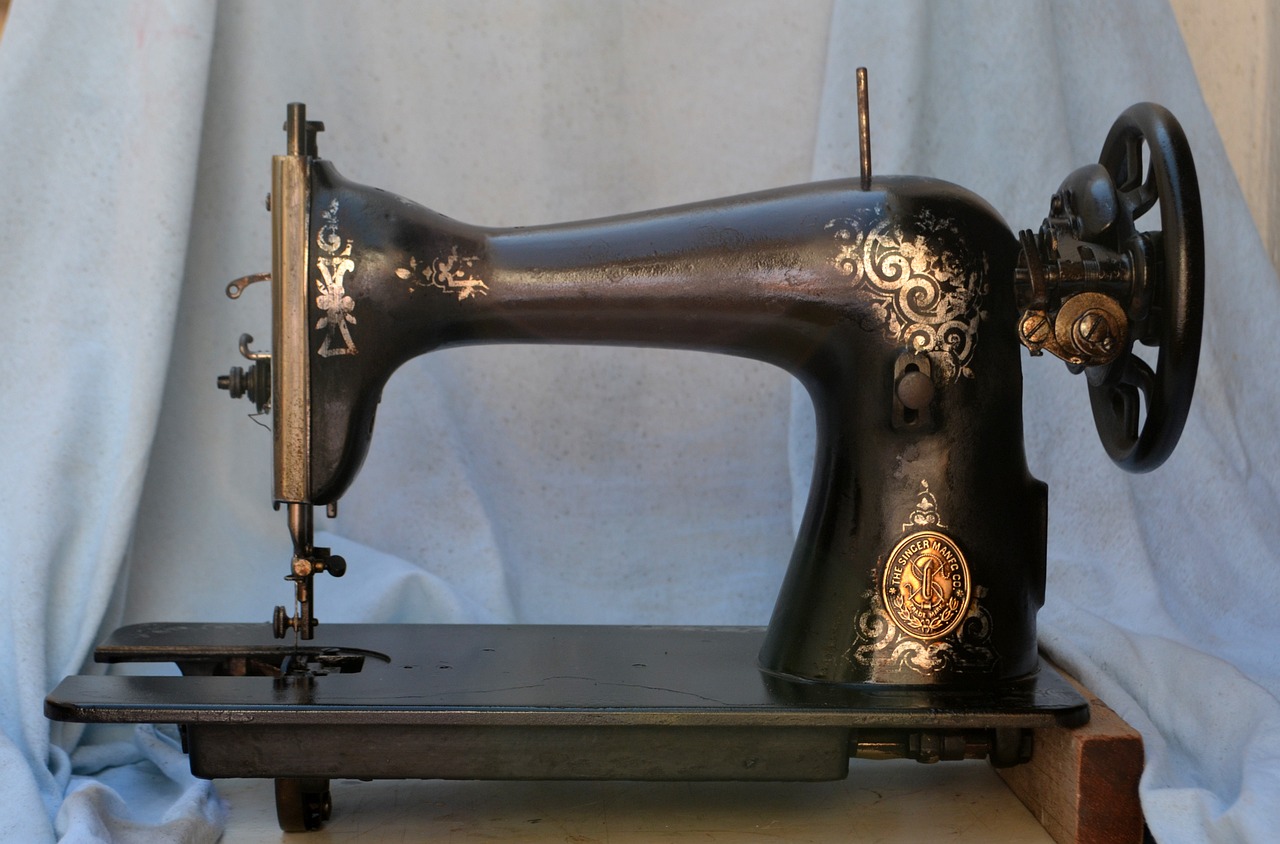
Key Features to Look For
When it comes to choosing the right sewing machine, it's essential to pay attention to certain key features that can significantly enhance your sewing experience. After all, the right machine can turn a frustrating task into a delightful hobby! So, what should you be looking for? Let's dive into the nitty-gritty of sewing machine features that can make all the difference.
First and foremost, consider the stitch options. A sewing machine with a variety of stitches opens up a world of possibilities for your projects. Whether you're working on a simple hem or an intricate quilt, having access to different stitches allows you to add creativity and functionality to your work. Most machines will offer basic utility stitches, but if you're looking to explore more, consider those that also include decorative and specialty stitches.
Next up is speed control. This feature is particularly beneficial for beginners who may not yet have the confidence to sew at high speeds. A machine with adjustable speed settings allows you to start slow and gradually pick up speed as you become more comfortable. It’s like having a training wheels option for your sewing adventures! Plus, being able to control the speed means you can tackle delicate fabrics without the fear of making mistakes.
Another feature that can elevate your sewing game is automatic threading. Imagine the time saved when you don’t have to struggle with threading the needle manually! This feature is not only a time-saver but also a huge relief for those with less-than-perfect eyesight. It can turn what might be a tedious task into a quick and easy one.
| Feature | Benefits |
|---|---|
| Stitch Options | Variety allows for creativity and functionality in projects. |
| Speed Control | Helps beginners sew at a comfortable pace. |
| Automatic Threading | Reduces time spent on setup and eases the threading process. |
Additionally, consider the bobbin system. Some machines come with a top-loading bobbin, which is generally easier to use and allows for quick changes. Others might have a front-loading bobbin, which can be a bit more complicated but offers greater visibility of the thread. It’s worth trying out both types to see which one you prefer.
Lastly, don't overlook ease of maintenance. A machine that is easy to clean and maintain will not only last longer but will also keep you sewing without interruptions. Look for machines that come with a removable sewing plate and easy access to the bobbin area. Regular maintenance is vital, so the simpler it is to perform, the better!
In summary, when choosing a sewing machine, keep an eye out for stitch options, speed control, automatic threading, the bobbin system, and ease of maintenance. These features will not only enhance your sewing experience but also ensure that you can tackle a variety of projects with confidence and ease.
- What is the best sewing machine for beginners? - Look for machines with user-friendly features like automatic threading and speed control.
- How much should I spend on a sewing machine? - It depends on your needs, but aim for a balance between quality and budget.
- Are computerized sewing machines worth it? - Yes, they often come with advanced features that can simplify complex projects.
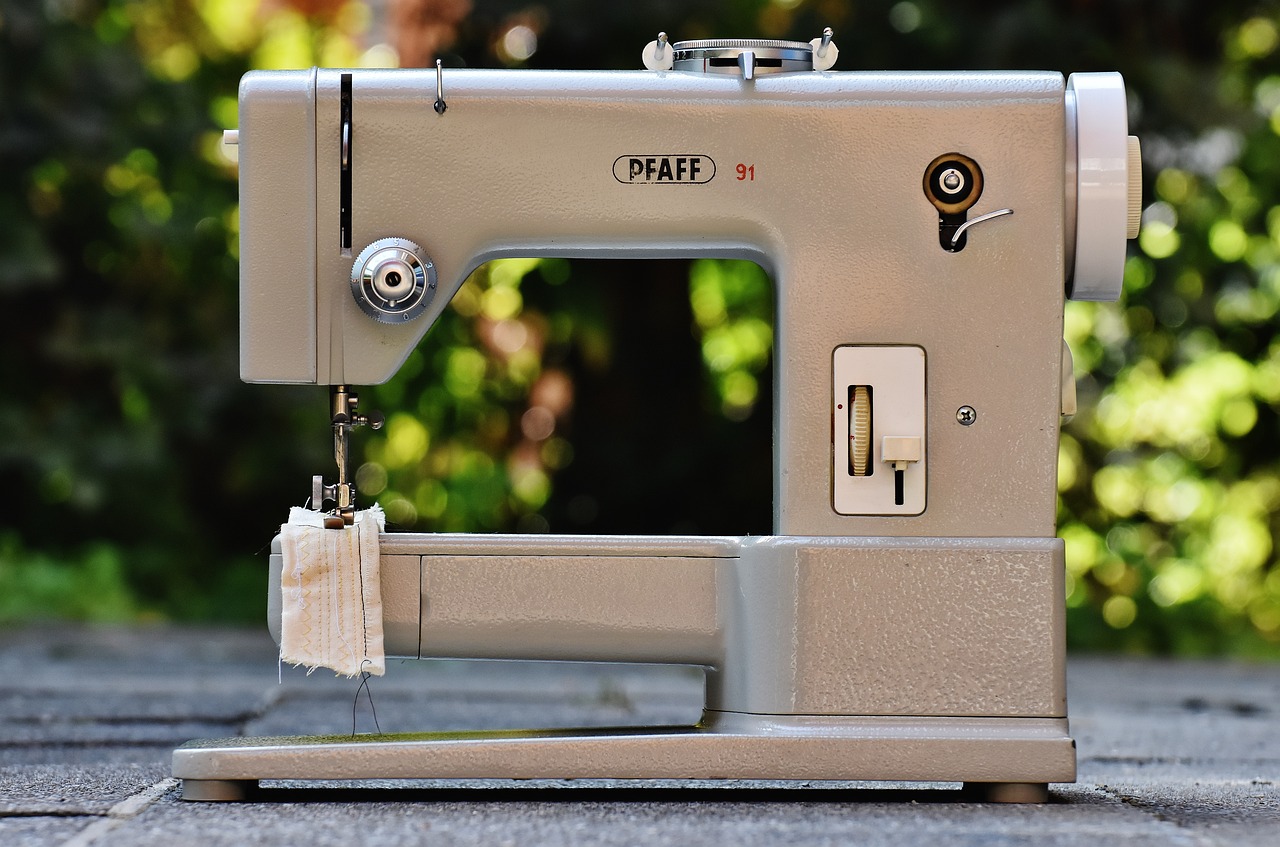
Stitch Options and Variety
When it comes to sewing, the stitch options available on your machine can make all the difference in the world. Imagine trying to create a beautiful quilt or a stylish dress without the right stitches; it would be like painting a masterpiece with only one color! Understanding the variety of stitches and their specific uses is essential for both beginners and seasoned sewists alike. So, let’s dive into the fascinating world of stitches and explore how they can elevate your sewing projects.
At the core of every sewing machine are the utility stitches, which serve as the backbone for most sewing tasks. These stitches are designed for practicality, making them perfect for basic seams, hems, and repairs. A straight stitch, for instance, is your go-to for almost any project, while a zigzag stitch is essential for finishing raw edges to prevent fraying. The versatility of utility stitches cannot be overstated; they are the workhorses of your sewing toolkit.
But don’t stop there! Once you’ve mastered the basics, it’s time to have some fun with decorative stitches. These stitches can transform an ordinary piece of fabric into something extraordinary. Think of them as the icing on the cake. Popular decorative options include scallops, flowers, and even intricate patterns that can be used to embellish seams or add flair to pockets. With a little creativity, you can turn a simple garment into a unique fashion statement, showcasing your personal style.
To give you a clearer picture, here’s a quick overview of some common stitch types and their uses:
| Stitch Type | Use |
|---|---|
| Straight Stitch | Basic seams, quilting |
| Zigzag Stitch | Finishing edges, stretch fabrics |
| Decorative Stitches | Embellishments, unique designs |
| Buttonhole Stitch | Creating buttonholes |
When selecting a sewing machine, it’s crucial to consider the variety of stitches it offers. A machine with a wide range of stitch options allows for greater creativity and adaptability in your projects. Whether you’re sewing a simple tote bag or a complex evening gown, having the right stitch at your fingertips can make the process smoother and more enjoyable. Plus, many modern machines come equipped with built-in stitch libraries, making it easy to choose the perfect stitch for every task.
In conclusion, the stitch options available on your sewing machine are not just technical details; they are the keys to unlocking your creativity. By understanding the different types of stitches and their applications, you can take your sewing skills to the next level. So, don’t hesitate to experiment and try out new stitches. After all, sewing is not just about making things; it’s about expressing yourself and having fun!
- What are the most important stitches for beginners? Straight and zigzag stitches are fundamental for most sewing projects.
- Can I use decorative stitches on all types of fabric? While decorative stitches can enhance any fabric, it's essential to choose the right stitch for the fabric type to avoid puckering or distortion.
- How do I choose the right stitch for my project? Consider the fabric type, the purpose of the project, and the desired finish to select the appropriate stitch.
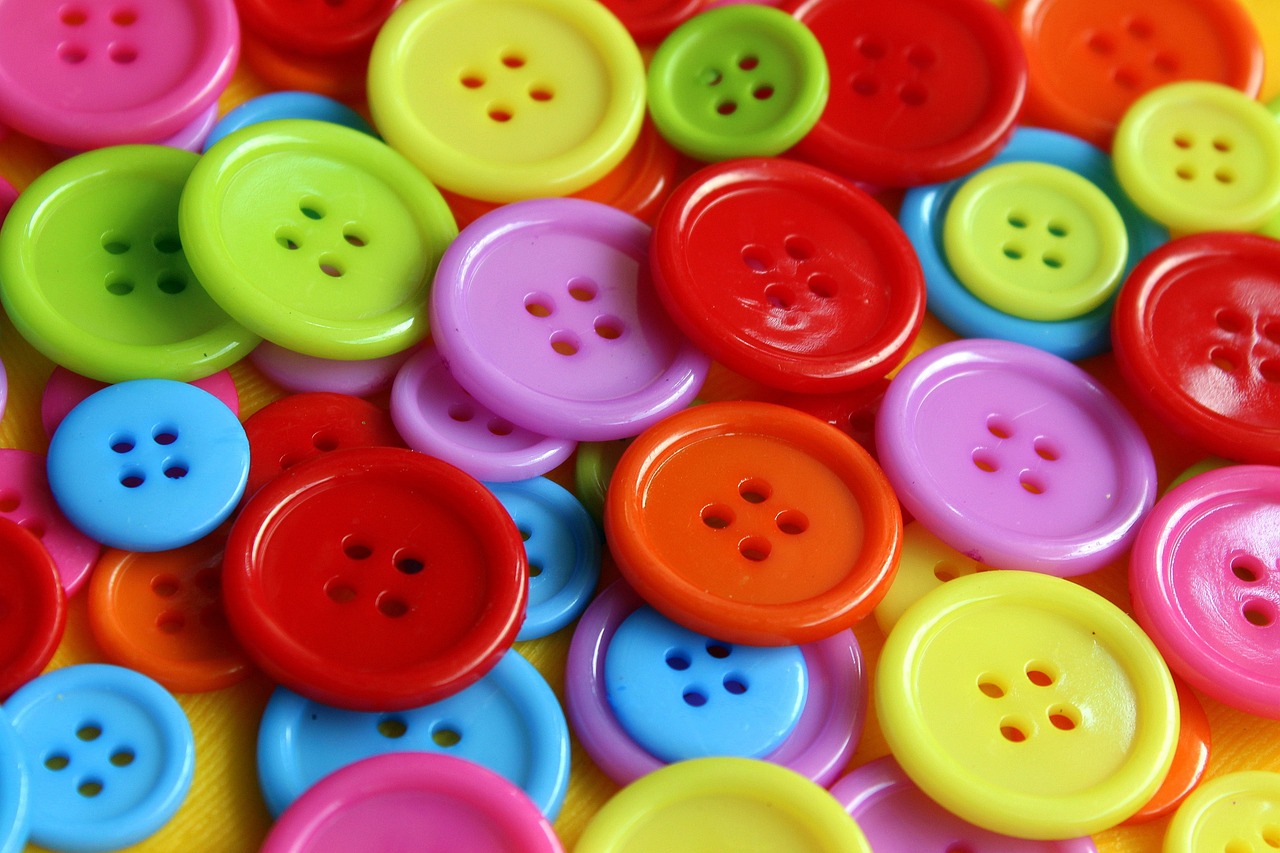
Utility Stitches
Utility stitches are the backbone of any sewing machine, serving as the essential tools for basic sewing tasks. These stitches are designed to provide functionality and durability, making them ideal for a wide range of projects, from mending clothes to constructing simple garments. Understanding utility stitches is crucial for both beginners and experienced sewers alike, as they form the foundation on which more complex sewing techniques are built.
When you think of utility stitches, imagine them as the reliable workhorses in your sewing toolkit. They include straight stitches, zigzag stitches, and more specialized types like blind hem stitches. Each of these stitches has its unique purpose and application, ensuring that you can tackle various sewing challenges with ease. For example, a straight stitch is perfect for seaming, while a zigzag stitch is excellent for finishing raw edges to prevent fraying.
Here’s a quick overview of some common utility stitches:
- Straight Stitch: The most basic stitch, used for seaming and topstitching.
- Zigzag Stitch: Versatile for finishing edges and sewing stretchy fabrics.
- Blind Hem Stitch: Ideal for hemming garments without visible stitching.
- Overlock Stitch: Used for finishing seams, particularly on knit fabrics.
Each of these stitches plays a pivotal role in ensuring your sewing projects are both functional and aesthetically pleasing. For instance, if you're working on a quilt, a straight stitch will keep your layers together, while a zigzag stitch can add a decorative touch when finishing the edges. By mastering utility stitches, you’ll gain the confidence to experiment with more intricate designs and techniques as you progress in your sewing journey.
Additionally, many modern sewing machines come equipped with a variety of utility stitches, allowing you to choose the best one for your specific project. This versatility means that whether you're a beginner just starting out or a seasoned pro tackling more advanced projects, you'll find utility stitches to be indispensable. So, as you explore the world of sewing, remember that these fundamental stitches are your friends, ready to support you in creating beautiful, functional pieces.
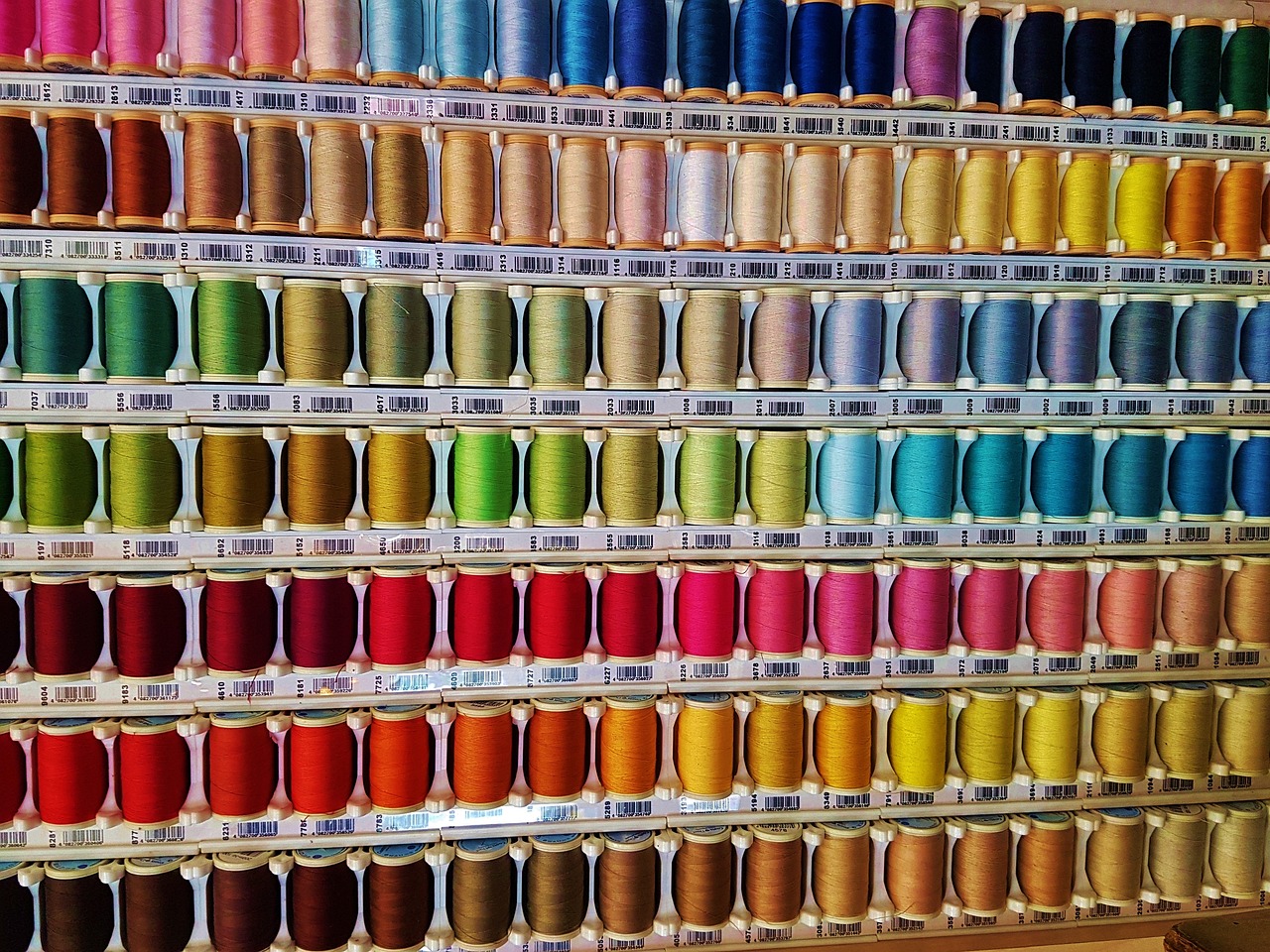
Decorative Stitches
When it comes to adding that extra touch of creativity to your sewing projects, are your best friends. These stitches not only serve a functional purpose but also transform ordinary fabric into something extraordinary. Imagine your plain pillowcase adorned with intricate patterns or your simple tote bag jazzed up with vibrant designs. That’s the magic of decorative stitches!
Decorative stitches come in various forms, each offering unique visual appeal. Some of the most popular types include:
- Zigzag Stitches: These versatile stitches can be used for both functional and decorative purposes. They’re great for finishing edges and adding a playful touch to your projects.
- Appliqué Stitches: Perfect for adding fabric shapes to your projects, appliqué stitches allow you to create stunning designs by layering different fabrics.
- Embroidery Stitches: These stitches enable you to create beautiful patterns and motifs. They can turn any piece of fabric into a work of art.
- Heirloom Stitches: Often used in quilting and garment making, these stitches add a vintage flair and are perfect for creating elegant designs.
Utilizing decorative stitches can elevate your sewing game. They can be applied to hems, collars, and even as borders on quilts. Think of them as the jewelry of your sewing projects—just like a necklace can transform a simple outfit, decorative stitches can make your creations stand out.
However, it’s essential to choose the right stitch based on the fabric you’re working with. For instance, heavier fabrics may require sturdier stitches, while delicate fabrics might benefit from lighter, more intricate designs. Additionally, experimenting with thread colors can further enhance the visual impact of your decorative stitches. A contrasting thread can make the stitch pop, while a matching thread can create a subtle, harmonious look.
In conclusion, don’t shy away from incorporating decorative stitches into your sewing repertoire. They offer endless possibilities for creativity and personalization. Whether you’re a seasoned pro or a beginner, embracing decorative stitches can turn your sewing projects from mundane to magnificent!
Q: What are decorative stitches used for?
A: Decorative stitches are primarily used to enhance the visual appeal of sewing projects. They can be applied to hems, collars, and various fabric applications to create unique designs.
Q: Can I use decorative stitches on all types of fabric?
A: While decorative stitches can be used on many fabrics, it’s important to choose the right stitch based on the fabric's weight and texture. Heavier fabrics may require sturdier stitches, whereas delicate fabrics work best with lighter designs.
Q: Do all sewing machines have decorative stitch options?
A: Not all sewing machines come equipped with decorative stitch options. If this feature is important to you, make sure to check the specifications of the machine before purchasing.
Q: How can I learn to use decorative stitches effectively?
A: The best way to learn is through practice! Start by experimenting with different decorative stitches on scrap fabric. There are also many online tutorials and classes that can guide you through the process.
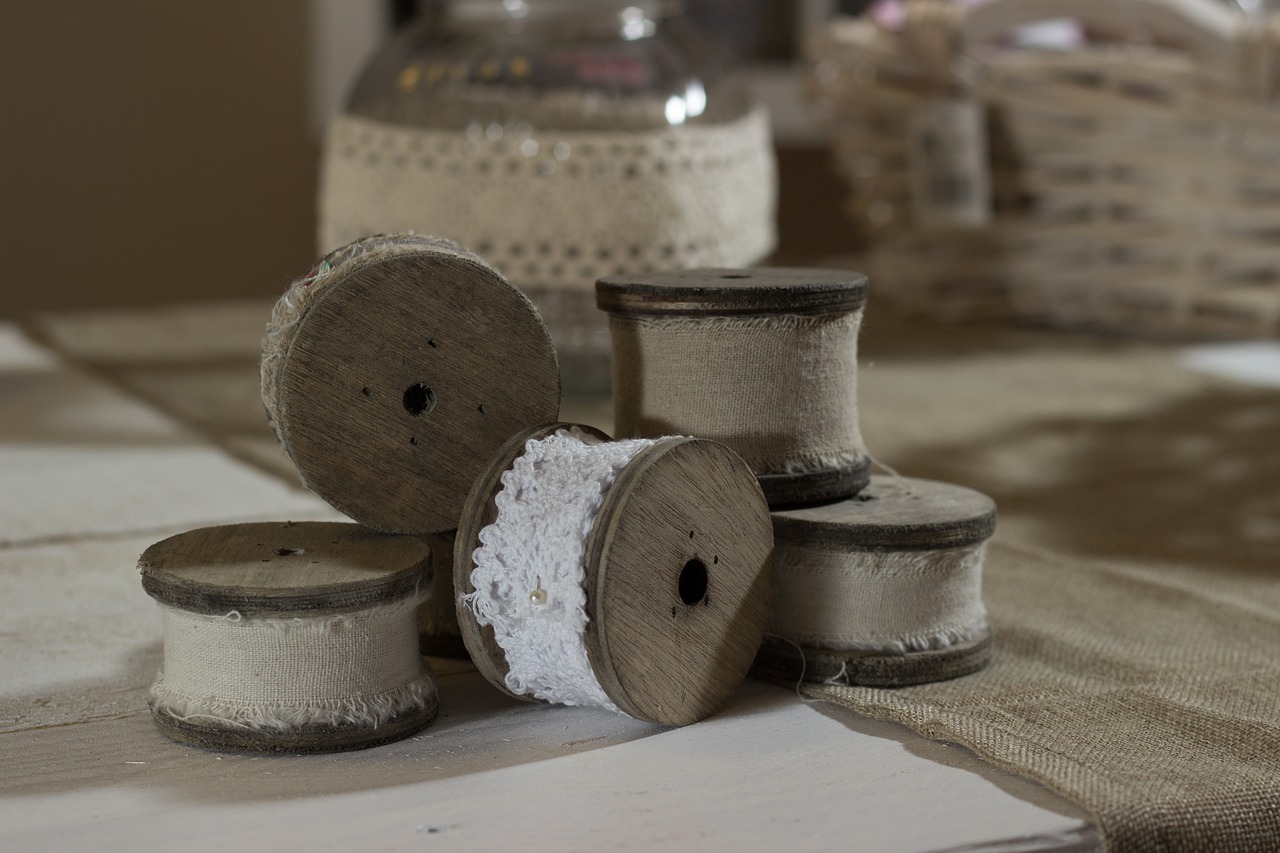
Ease of Use and Maintenance
This guide explores essential factors to consider when selecting a sewing machine, including types, features, and tips for beginners to ensure you make an informed decision.
There are various types of sewing machines tailored for different needs. This section will outline the key differences between mechanical, electronic, and computerized machines.
When choosing a sewing machine, certain features can enhance your sewing experience. This section discusses essential features like stitch options, speed control, and automatic threading.
The variety of stitches available on a sewing machine can significantly impact your projects. Here, we’ll explore the most common stitch types and their uses.
Utility stitches are fundamental for basic sewing tasks. This subheading will detail their functions and when to use them for optimal results.
Decorative stitches can add flair to your projects. This section will cover popular decorative stitches and how they can enhance your sewing creations.
When it comes to sewing machines, ease of use and maintenance are crucial factors that can make or break your sewing experience. Imagine trying to navigate a complicated machine when all you want to do is create—frustrating, right? A user-friendly sewing machine will often feature intuitive controls, clear instructions, and a design that simplifies the sewing process. Look for machines with easy-to-read displays and simple stitch selectors that allow you to switch between different settings effortlessly.
Moreover, consider the weight and portability of the machine. If you plan to take your sewing machine to classes or workshops, a lightweight model with a sturdy carrying case can be a game-changer. You don’t want to be lugging around a heavy machine that feels more like a workout than a creative endeavor!
Maintenance is another aspect that shouldn't be overlooked. Regular upkeep ensures your machine runs smoothly and lasts for years to come. Here are some essential maintenance tips:
- Cleaning: Regularly clean the machine to prevent dust and lint buildup. Most machines come with a brush for this purpose.
- Oiling: Follow the manufacturer's instructions on when and how to oil your machine. A well-oiled machine runs more efficiently.
- Checking Tension: Ensure the thread tension is correctly set for different fabrics. This can significantly affect the quality of your stitches.
Some machines even feature self-cleaning or automatic maintenance reminders, which can save you time and hassle. Before making a purchase, check if the model you’re considering has these handy features. In the long run, a machine that is easy to use and maintain will allow you to focus on what you love most—sewing!
Budget plays a crucial role in selecting a sewing machine. This section will guide you on how to balance quality and cost effectively.
Investing in a sewing machine doesn't have to break the bank. Here, we’ll provide tips on finding machines that offer great value without compromising quality.
Consideration of a sewing machine as a long-term investment can affect your purchase decision. This subheading will explain why choosing the right machine matters for future projects.
Q: What should I look for in a beginner sewing machine?
A: Look for a machine that is user-friendly, lightweight, and has a variety of stitch options. Features like automatic threading and a clear manual can also be very helpful.
Q: How often should I maintain my sewing machine?
A: It’s best to clean and oil your machine after every few sewing sessions, depending on how much you use it. Regular maintenance will keep it running smoothly.
Q: Are computerized sewing machines better than mechanical ones?
A: It depends on your needs. Computerized machines offer more features and automation, while mechanical machines are often simpler and easier to repair.
Q: Can I use any type of fabric with my sewing machine?
A: Most machines can handle a variety of fabrics, but always check the manufacturer's guidelines for specific recommendations.

Budget Considerations
When it comes to choosing a sewing machine, are often at the forefront of many buyers' minds. After all, nobody wants to fork out hard-earned cash only to find out that their new machine doesn't meet their needs. It's essential to strike a balance between quality and affordability.
First off, it's vital to understand that sewing machines come in various price ranges, from budget-friendly models to high-end machines that boast advanced features. The key is to determine what you truly need and how much you're willing to spend. For instance, if you're just starting out, you might not need all the bells and whistles that come with a top-of-the-line model. Instead, a basic machine with essential features could be perfect for your initial projects.
Consider creating a budget plan based on the following factors:
- Purpose: Are you planning to sew occasionally, or do you have grand ambitions of becoming a sewing expert?
- Features: Identify which features are non-negotiable for your sewing projects. Do you need a variety of stitch options, or is a straight stitch sufficient?
- Brand Reputation: Sometimes, investing a little more in a reputable brand can save you money in the long run due to fewer repairs and better customer support.
To give you a clearer picture, here's a simple table that outlines the general price ranges and what you might expect from machines in each category:
| Price Range | Typical Features | Best For |
|---|---|---|
| Under $200 | Basic stitches, manual controls | Beginners, light sewing |
| $200 - $500 | More stitch options, electronic controls, some automatic features | Hobbyists, intermediate users |
| Above $500 | Advanced features, computerized settings, extensive stitch libraries | Serious sewists, professionals |
Another point to ponder is the long-term investment aspect of your purchase. Think of a sewing machine as a tool that will serve you for years to come. Spending a bit more now on a quality machine can save you money on repairs and replacements later. Plus, a well-chosen machine can grow with you as your skills improve and your projects become more complex.
Ultimately, the best approach is to research and compare different models within your budget. Read reviews, watch tutorials, and even visit local sewing shops to test out machines firsthand. Remember, a well-informed decision will not only enhance your sewing experience but also ensure that you remain excited about your projects without the burden of buyer's remorse.
1. How much should I spend on my first sewing machine?
Most beginners find that a budget of around $200 is sufficient for a reliable machine with essential features.
2. Are expensive sewing machines worth the investment?
In many cases, yes. Higher-priced machines often come with better build quality, more features, and longer warranties, making them a better long-term investment.
3. Can I find good sewing machines under $200?
Absolutely! There are many quality options available in this price range, especially for beginners.
4. Should I buy a new or used sewing machine?
It depends on your comfort level. A new machine often comes with warranties and the latest features, while a used machine can be more affordable but may require more maintenance.
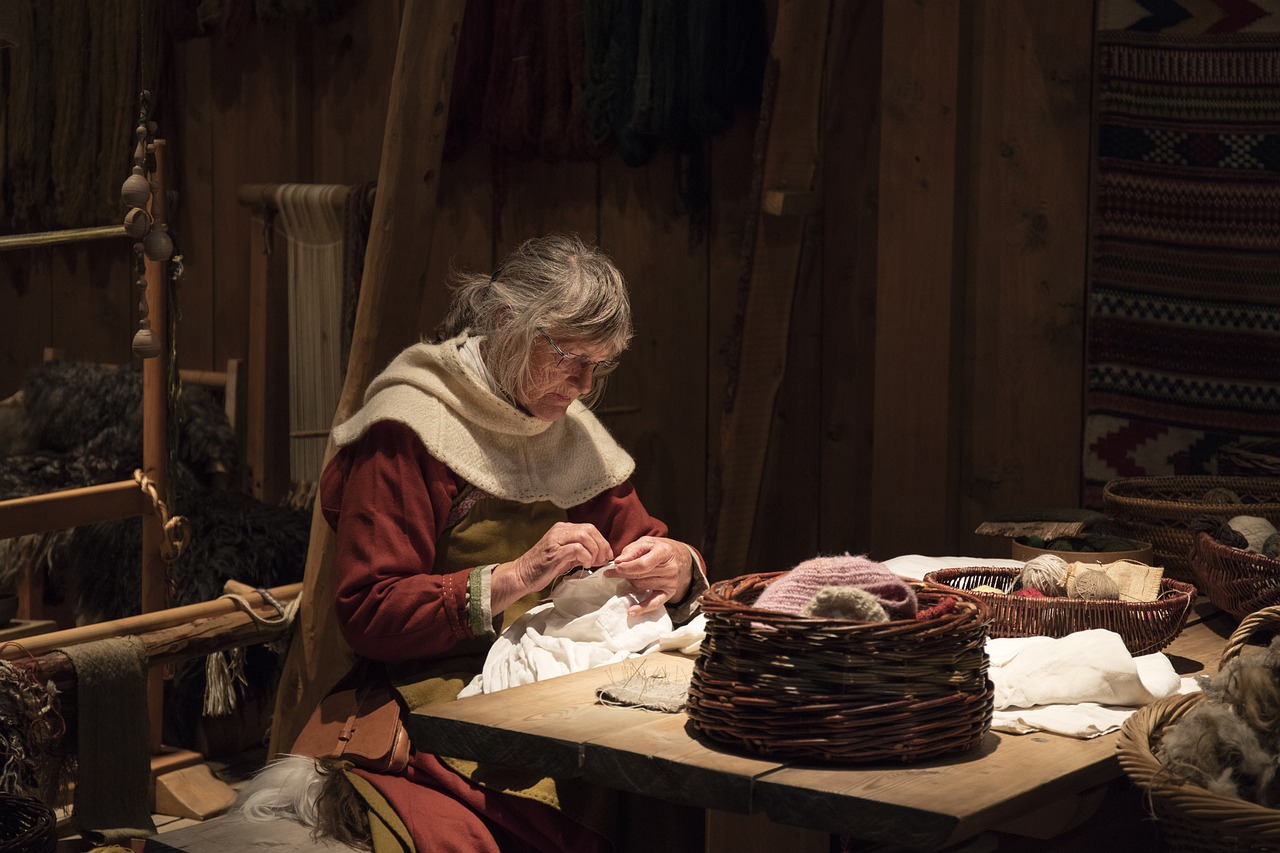
Finding Value for Money
When it comes to purchasing a sewing machine, the quest for value for money can feel like searching for a needle in a haystack. With countless options available, how do you ensure that your investment is worthwhile? First off, it’s essential to recognize that a higher price tag doesn’t always equate to better quality. Instead, focus on what you truly need and how often you plan to use the machine. Are you a casual hobbyist or a serious sewing enthusiast? Your answer will guide you in making a more informed decision.
One of the most effective ways to find a machine that offers great value is to do thorough research. Read reviews from other users and watch videos that showcase the machine in action. This can give you a clearer picture of whether a particular model suits your needs. Additionally, consider the brand's reputation. Established brands often provide better customer support and warranties, which can save you from future headaches.
Another tip is to look for machines that come with a variety of features without overwhelming you with unnecessary extras. For instance, a machine that offers a solid range of stitch options, speed control, and automatic threading can provide excellent functionality without breaking the bank. Here’s a quick table to illustrate how different features can impact your overall sewing experience:
| Feature | Importance | Budget-Friendly Options |
|---|---|---|
| Stitch Options | Allows variety in projects | Basic utility stitches are often sufficient |
| Speed Control | Helps in managing complex tasks | Look for machines with adjustable speed settings |
| Automatic Threading | Saves time and frustration | Some budget machines offer this feature |
Moreover, don’t forget to factor in the cost of accessories and maintenance when assessing your budget. Some machines may seem affordable at first glance but require expensive attachments or frequent servicing. Therefore, it’s wise to check if the machine you’re considering comes with essential accessories like presser feet, bobbins, and a sturdy carrying case. This can save you money in the long run and ensure that you’re set up for success right from the start.
Lastly, keep an eye out for seasonal sales or discounts, which can significantly reduce the price of quality machines. Retailers often have promotions during holidays or special events, making it a great time to snag a deal. By being patient and doing your homework, you can find a sewing machine that not only meets your needs but also provides exceptional value for your hard-earned money.
- What should I consider when buying a sewing machine? Look for features that suit your sewing needs, such as stitch options, ease of use, and maintenance requirements.
- Are expensive sewing machines worth it? Not always. Evaluate what you need and find a machine that offers good quality without unnecessary features.
- How can I maintain my sewing machine? Regular cleaning and servicing, along with proper storage, can extend the life of your machine.
- Where can I find good deals on sewing machines? Check online retailers, local sewing shops, and seasonal sales for discounts.

Long-term Investment
When it comes to purchasing a sewing machine, viewing it as a can significantly influence your decision-making process. Just like buying a quality pair of shoes or a reliable car, investing in a good sewing machine means you’re not just looking for a quick fix; you’re aiming for something that will serve you well for years to come. Consider this: a well-chosen sewing machine can accompany you through countless projects, from simple repairs to elaborate creations, making it a worthwhile addition to your crafting arsenal.
One of the first aspects to consider is the durability of the machine. A sturdy, well-constructed sewing machine will withstand the test of time better than a flimsy model. Look for machines that are made from high-quality materials and come with a solid warranty. This not only ensures longevity but also gives you peace of mind knowing that you’re covered if anything goes wrong. A machine that lasts will save you money in the long run, as you won’t have to replace it frequently.
Moreover, think about the features you might need as your skills progress. If you start with a basic model, you may find yourself limited as you grow and want to tackle more complex projects. Investing in a machine that offers a range of features—like various stitch types, speed control, and even embroidery options—will allow you to expand your sewing capabilities without needing to buy a new machine later. It’s like buying a smartphone; the more features it has, the longer you can use it without feeling the need to upgrade.
Another important factor is the brand reputation. Some brands are known for their reliability and customer support, which can be invaluable if you run into issues or need help with maintenance. Opting for a reputable brand may cost a bit more upfront, but it often pays off in the long run through better performance and support. Additionally, consider the availability of spare parts and accessories. A machine that is easy to repair and has readily available parts can save you time and money down the line.
Finally, remember to factor in the resale value. If you ever decide to upgrade or change your sewing machine, a well-maintained, high-quality machine can retain its value much better than a cheaper model. This means that you can recoup some of your initial investment when you sell it, making it a smarter financial choice overall. Think of it as planting a seed: the more you invest in quality now, the more you can potentially harvest later.
In summary, treating your sewing machine purchase as a long-term investment involves careful consideration of durability, features, brand reputation, and resale value. By taking the time to choose wisely, you’ll not only enhance your sewing experience but also ensure that your investment pays off for years to come.
- What should I look for in a sewing machine? Focus on durability, features, ease of use, and brand reputation.
- How much should I expect to spend on a good sewing machine? Prices can vary widely, but investing in a quality machine typically starts around $200 and can go up depending on features.
- Can I find a good sewing machine on a budget? Yes! Look for models that offer great value for money, often found through reputable brands that balance quality and cost.
- What are the benefits of a computerized sewing machine? Computerized machines often offer a wider range of stitches, better precision, and user-friendly features that can enhance your sewing experience.
Frequently Asked Questions
- What type of sewing machine is best for beginners?
For beginners, a mechanical sewing machine is often the best choice. They are straightforward, easy to use, and typically more affordable. Once you get the hang of the basics, you can explore electronic or computerized models that offer more features.
- How do I choose the right sewing machine for my needs?
Consider what projects you plan to work on. If you're focused on basic sewing, a simple machine with utility stitches will suffice. For more complex projects, look for a machine with a variety of stitch options and features like speed control and automatic threading.
- Are decorative stitches worth it?
Absolutely! Decorative stitches can add a unique touch to your projects, making them stand out. They’re perfect for embellishing garments or adding flair to home décor items.
- How much should I spend on a sewing machine?
Your budget will depend on your needs and how often you plan to sew. You can find good quality machines starting around $150, but investing in a higher-end model can be beneficial for more serious sewing enthusiasts.
- What maintenance does a sewing machine require?
Regular maintenance includes cleaning the machine, oiling moving parts, and changing the needle frequently. Keeping your machine in good shape ensures smooth operation and longevity.
- Can I find a sewing machine that offers good value without sacrificing quality?
Yes! Look for brands known for reliability and check for reviews. Sometimes, slightly older models can be found at a discount, offering great features at a lower price.
- Why should I consider my sewing machine as a long-term investment?
A sewing machine can last for many years if properly maintained. Choosing a quality machine that meets your needs can save you money in the long run and support your sewing journey as your skills grow.



















